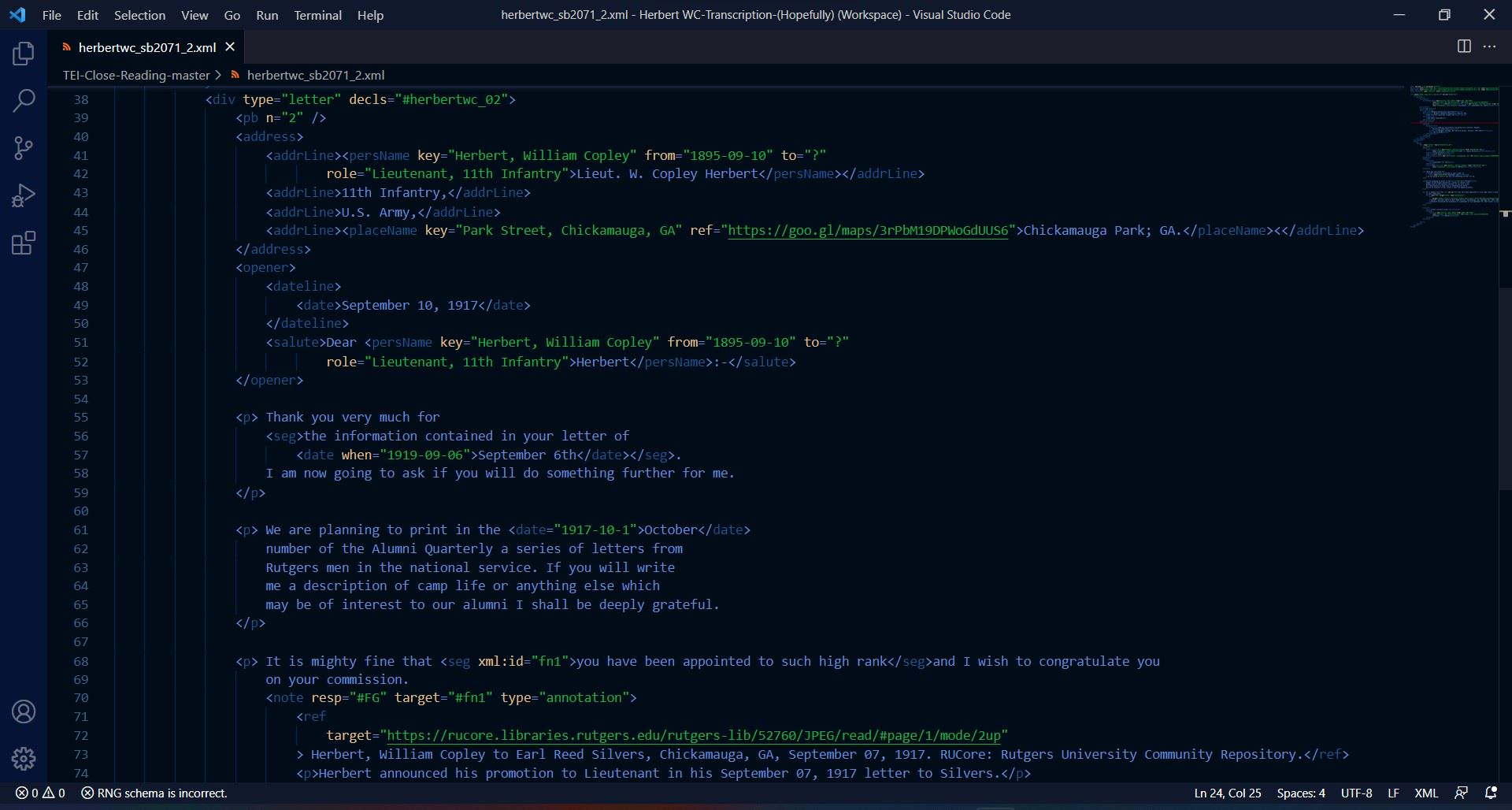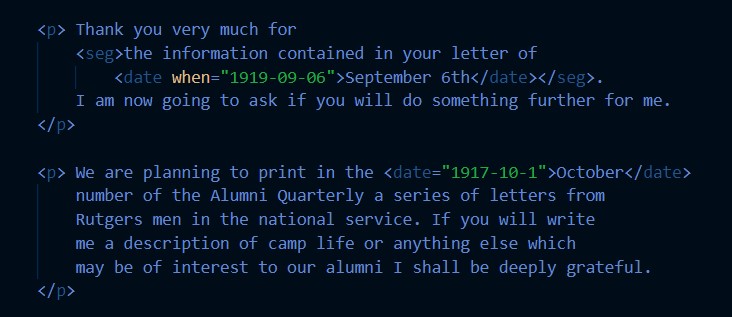Blog Post #2: Encoding William Copley Herbert's Letter to Earl Reed Silvers
The Aim of TEI-XML Encoding
In this lab, I transcribed the second letter of a correspondence between Lieutenant William Copley Herbert of the 11th Infantry and Director of the War Service Bureau, Earl Reed Silvers during the latter half of WWI in 1917. I believe the primary aim of encoding this letter was to teach students about the work of digital archivists and the ways new technologies are now preserving precious historical artifacts. In particular, the method of identifying key components of the letters, such as notable persons, places, events, and terms, is a critical analysis skill that can be utilized across multiple fields of research and writing.

The Most Compelling Part of the Lab
Truth be told, I had a great deal of difficulty working through the lab at first. I am a newcomer at coding and maneuvering the intricacies of XML (all the while without creating any typos and errors in the schema) proved immensely challenging. However, once I took a closer look at the example transcription, I began seeing breakthroughs in my work. The relief and excitement of finally understanding what I was doing was immense.

I found that the most compelling part of the lab then was creating an annotation to a “seg” element to describe the context behind Silvers’ reference to Herbert’s rank promotion. It was satisfying to correctly make a “note” parent element, then a URL reference to the letter Silvers was referring to, and afterwards creating a Chicago styled citation for the annotation. I was doing professional work, at least in my eyes.
Emerging Patterns
The letter I worked on was short, so there was not a great deal of emerging relationships or trends that I could detect. Nonetheless, I found that places requiring “seg” or “date” elements relied on prior correspondence to be made sense in context. These other letters form a timeline of events that historians can use in their research. Without being able to place these events or times, this letter’s placement in the greater overview of time would be muddled, making the reader’s job more difficult than necessary.
